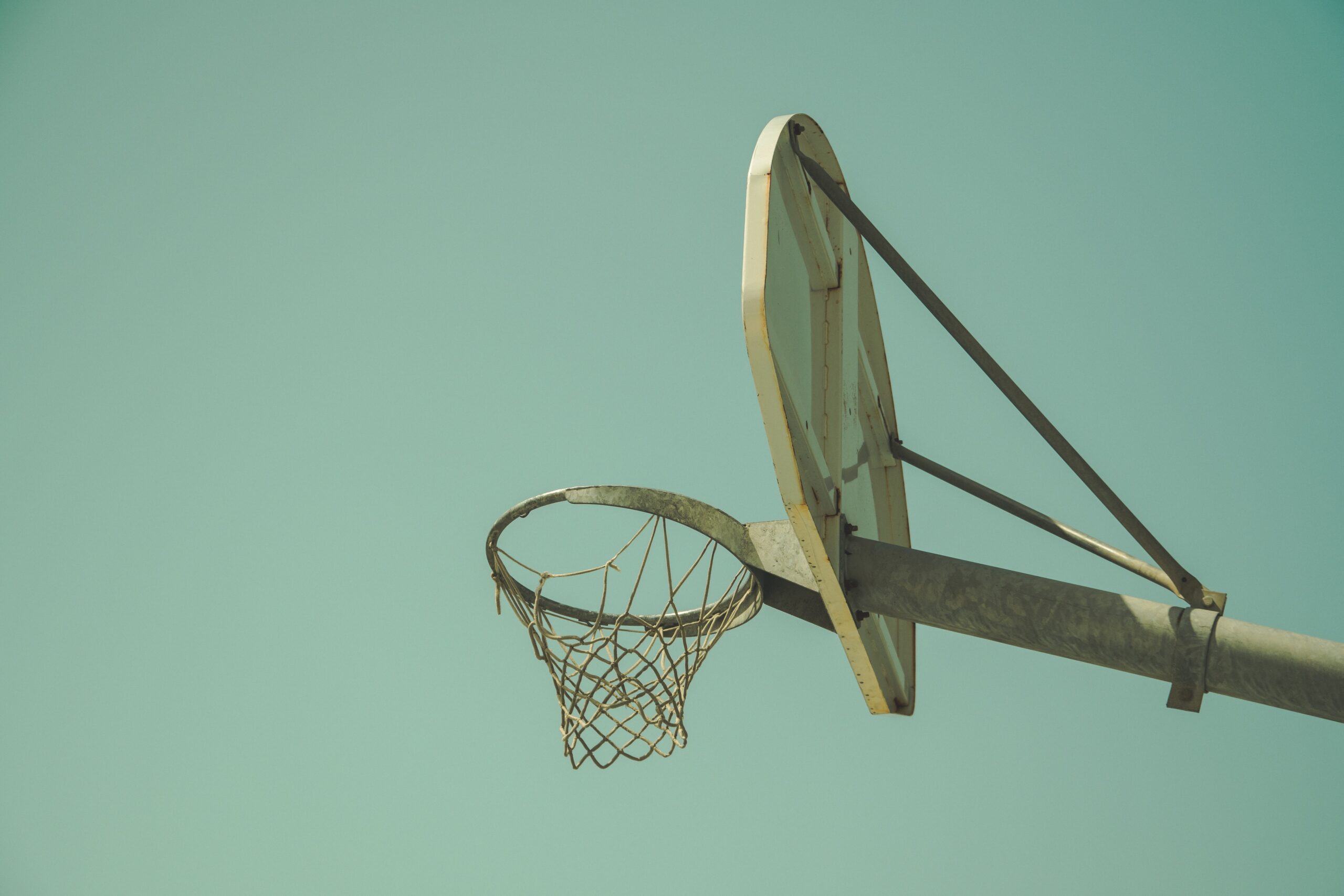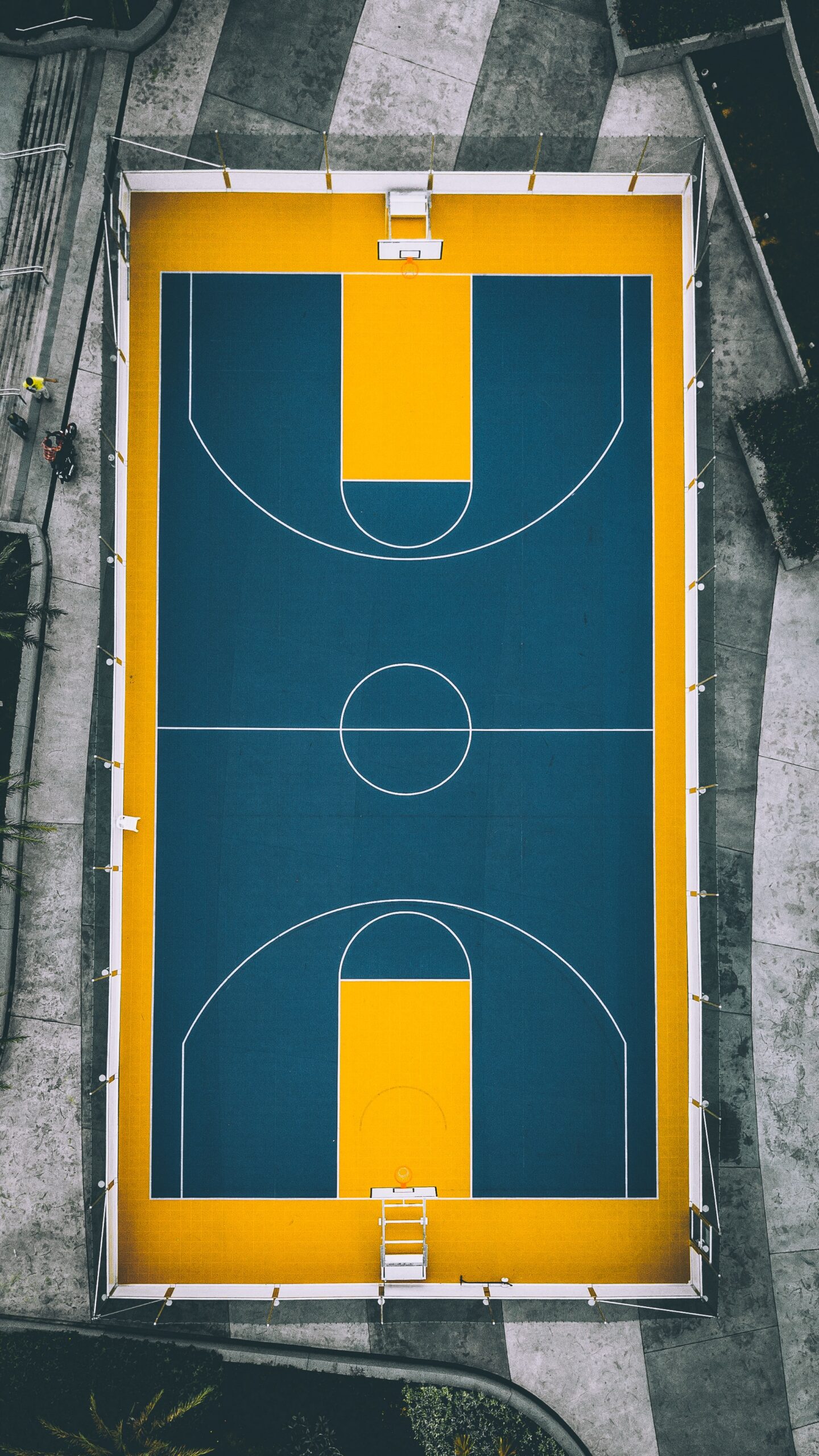In the fast-paced world of basketball, passes play a crucial role in propelling the game forward. They serve as the lifeblood of teamwork, allowing players to execute strategies and create scoring opportunities. From the crisp and accurate chest pass to the flashy and unpredictable behind-the-back pass, there is a wide variety of passes used in basketball. Each pass brings its own unique flavor to the game, adding excitement and flair to the court. So, whether you’re a seasoned basketball fan or just starting to learn the game, let’s explore the different types of passes that basketball players utilize to create magic on the hardwood.

Chest Pass
Description
The chest pass is one of the most fundamental and commonly used passes in basketball. As the name suggests, this pass involves throwing the ball from the chest using both hands. It is executed by holding the ball close to the chest with elbows pointed out, and then extending the arms forward in a quick and powerful motion to propel the ball towards the intended target.
Technique
To perform a chest pass, start by gripping the ball firmly with both hands. Position your elbows out to the sides, slightly away from your body, and keep your fingers spread for better control. As you release the pass, extend your arms forward while exerting force from your chest, snapping your wrists forward to generate more power. This technique helps in maintaining accuracy and speed during the pass.
Purpose and Usage
The chest pass is primarily used for quick and effective ball movement, especially in situations where players are closely guarded or need to pass through tight spaces. It allows for swift transfers of the ball between teammates, enabling them to maintain the pace of the game and exploit scoring opportunities.
Advantages
The chest pass offers several advantages. Firstly, it is a versatile pass that can be executed both in stationary positions and while on the move. Secondly, it allows for accurate and efficient ball distribution, making it easier for teammates to catch and transition into their next move. Additionally, due to the use of both hands, the chest pass offers a lower risk of turnovers compared to one-handed passes.
Disadvantages
While the chest pass is a fundamental and reliable passing technique, it does have a few limitations. It is generally considered a shorter distance pass and may not be suitable for longer throws across the court. Moreover, it can be easily anticipated and intercepted by opponents if not executed with proper precision and timing. Therefore, players must be cautious when using chest passes in high-pressure situations.
Bounce Pass
Description
The bounce pass, as the name implies, involves bouncing the ball on the floor before reaching the intended recipient. This pass is executed by throwing the ball towards the chest or waist level of the teammate, allowing it to bounce once before reaching them.
Technique
To perform a bounce pass, grip the ball firmly with both hands and position it near your hip. Bend your knees and push the ball downward towards the targeted area on the floor, making sure the ball hits the ground about two-thirds of the distance to the receiving player. The angle and force of the bounce should be adjusted according to the distance and positioning of the teammate.
Purpose and Usage
The bounce pass is particularly useful when passing through defenders or when the passing lane is obstructed. By utilizing the bounce, the pass is more difficult for opponents to intercept. It enables the ball to bypass outstretched arms and legs, making it an effective pass in crowded situations.
Advantages
The bounce pass offers numerous advantages in basketball. Firstly, it is a low-risk pass with a reduced chance of being stolen by defenders. Secondly, it enables accurate delivery of the ball, allowing teammates to catch it at a comfortable height for immediate shooting or quick dribbles. Additionally, the bounce pass adds variety to a player’s passing options, making it harder for opponents to predict their next move.
Disadvantages
Although the bounce pass is generally a safe choice, it does have a few drawbacks. Since the ball is closer to the floor, it may take slightly longer for the recipient to catch the pass, especially if they are not prepared for it. Additionally, the bounce pass may not always be suitable for long-distance passes or when the court surface is slippery, as it may result in an unpredictable trajectory.
Overhead Pass
Description
The overhead pass, also known as the over-the-head pass, is a pass performed by throwing the ball with both hands from above the head. This pass involves extending the arms fully, with the palms facing forwards, to launch the ball towards the intended target.
Technique
To execute an overhead pass, grip the ball with both hands and bring it above your head. Keep your elbows slightly bent, pointing outward, and your fingers spread apart for better control. Push the ball upward and forward using a controlled motion, while extending your arms fully. Release the ball with a flick of the wrists to add accuracy and zip to the pass.
Purpose and Usage
The overhead pass is commonly used for long-distance passes and when there is a need for a high release point. It allows players to safely pass over defenders or make accurate passes to teammates cutting towards the basket. The overhead pass is especially effective for initiating fast breaks or creating scoring opportunities in transition.
Advantages
The overhead pass offers several advantages in basketball. Firstly, it allows for a higher release point, making it more difficult for defenders to reach or block the pass. Secondly, it provides good accuracy for longer throws, allowing players to make cross-court passes or outlet passes. Additionally, the overhead pass can create a quick tempo in the game as it is usually faster than other passes.
Disadvantages
Despite its benefits, the overhead pass has a few limitations. Since the ball is brought above the head, it may draw attention from defenders and make it easier for them to anticipate and intercept the pass. Additionally, players must ensure proper timing and execution, as a mistimed or imprecise overhead pass can result in turnovers. Furthermore, when used in close quarters, the ball’s trajectory can be obstructed or deflected by opposition players.
Wraparound Pass
Description
The wraparound pass involves wrapping one arm around the back to pass the ball, fooling opponents and creating an opening for the receiver. It is a deceptive and creative pass that surprises defenders and provides a unique approach to ball movement.
Technique
To perform a wraparound pass, hold the ball with one hand, and as the defender approaches, quickly swing the ball around your body, passing it to a teammate on the opposite side. This pass is often executed with a single hand, utilizing a swift and fluid motion that catches opponents off guard.
Purpose and Usage
The wraparound pass is mainly used in tight spaces or situations where the passing lane is limited by defenders. It allows players to bypass their opponents and create scoring opportunities for teammates. The deceptive nature of this pass makes it particularly effective in surprising defenders and opening up the floor for offensive plays.
Advantages
The wraparound pass provides several advantages on the basketball court. Firstly, it is a highly deceptive technique that can catch defenders off balance, providing a brief window of opportunity for the recipient of the pass to make a play. Secondly, it adds creativity and excitement to the game, showcasing the skill and adaptability of the passer. Additionally, the wraparound pass can be executed quickly, allowing for rapid ball movement in high-pressure situations.
Disadvantages
While the wraparound pass can be an effective tool, it does have its disadvantages. One drawback is the higher risk of turnovers due to the unorthodox nature of the pass. As defenders become more experienced, they may anticipate and intercept the wraparound pass more frequently. It is important for players to use this pass judiciously and only when the situation allows for it. Furthermore, the wraparound pass requires significant practice and precision to execute successfully, so players must be wary of its difficulty when attempting it in games.

Behind-the-Back Pass
Description
The behind-the-back pass is a flashy and visually appealing pass that involves throwing the ball behind your back to a teammate. This pass adds flair and style to the game while providing an effective way to distribute the ball.
Technique
To perform a behind-the-back pass, start by gripping the ball with one hand. Begin the pass by swinging your arm across your body, behind your back, while simultaneously releasing the ball towards the intended recipient. The accuracy and precision of this pass come from the coordination between your arm movement and the timing of the release.
Purpose and Usage
The behind-the-back pass is primarily used to surprise defenders and create scoring opportunities. It allows players to deceive opponents who may be focusing on the ball handler, enabling quick and unexpected transfers to teammates. This pass is particularly useful in fast breaks, as it can easily catch defenders off guard and lead to easy baskets.
Advantages
The behind-the-back pass offers several advantages in basketball. Firstly, it adds excitement and entertainment value to the game, capturing the attention of spectators. Secondly, it provides a unique passing option that can confuse and frustrate defenders, giving the offense an advantage. Additionally, the behind-the-back pass can be an effective way to navigate through congested areas on the court, allowing players to find open teammates.
Disadvantages
Despite its appeal, the behind-the-back pass has its drawbacks. It is considered a high-risk pass due to the potential for turnovers if not executed with precision or in situations where a safer pass would be more appropriate. Players must be cautious and aware of the potential for interception by vigilant defenders. Moreover, the behind-the-back pass requires significant practice to perfect, as timing and accuracy are crucial to avoid turnovers and maintain control of the ball.
One-Handed No-Look Pass
Description
The one-handed no-look pass is a flashy and skillful pass executed without the passer looking at the intended recipient. This pass involves a combination of peripheral vision, court awareness, and trust in the teammate’s positioning.
Technique
To perform a one-handed no-look pass, grip the ball firmly with one hand while keeping your eyes focused in a different direction. Utilizing your peripheral vision, locate the intended target and quickly release the ball towards them with a flick of the wrist. This pass requires a high level of court awareness and familiarity with your teammates’ movements.
Purpose and Usage
The one-handed no-look pass is primarily used to surprise defenders and confuse opponents. It can be used to create scoring opportunities, especially when the passer attracts defensive attention and opens up passing lanes for teammates. This pass is often seen in fast break situations or when players are tightly guarded.
Advantages
The one-handed no-look pass offers several advantages in basketball. Firstly, it disorients defenders as they struggle to anticipate the direction of the pass. This element of surprise can lead to open shots or scoring opportunities for the offense. Secondly, the no-look pass highlights the passer’s court vision and ability to make plays without telegraphing intentions. Additionally, the one-handed no-look pass can ignite momentum and energize teammates, promoting teamwork and cohesion.
Disadvantages
While the one-handed no-look pass can be highly effective, it also carries risks. Due to the lack of direct vision, there is a higher chance of errant passes that may lead to turnovers. It requires a high level of skill and familiarity with teammates’ movements to execute successfully. Furthermore, opponents who become accustomed to a player’s tendency to utilize no-look passes may start reading their patterns and intercepting the passes more frequently.

Alley-Oop Pass
Description
The alley-oop pass is an exciting and visually captivating pass that involves throwing the ball high in the air to a teammate who catches it mid-air and immediately dunks or scores before landing. This pass is often executed near the basket, creating high-flying highlights and crowd-pleasing moments.
Technique
To execute an alley-oop pass, the passer typically throws the ball above the rim with a high arcing trajectory to allow the receiver to catch it mid-air. The timing and accuracy of the pass are crucial, as the receiver must coordinate their jump to catch the ball and complete the play.
Purpose and Usage
The alley-oop pass is primarily used as a scoring tactic near the basket. It is commonly employed in fast break situations or when an offensive player manages to break free from their defender near the rim. The alley-oop pass provides an opportunity for a high-percentage shot, capitalizing on the athleticism and jumping ability of players to finish with dunks or layups.
Advantages
The alley-oop pass offers numerous advantages in basketball. Firstly, it provides a visually stunning and entertaining aspect to the game, captivating spectators and boosting team morale. Secondly, it allows for high-percentage shots near the basket, as the offensive player is positioned advantageously to score before facing defensive resistance. Additionally, executing successful alley-oop plays can demoralize opponents and give the offense a psychological edge.
Disadvantages
While the alley-oop pass is a thrilling and effective technique, it does come with a few disadvantages. Since the pass requires precise timing and coordination between the passer and recipient, it is considered a higher-risk play. Mistimed passes or misjudgments can result in turnovers or missed opportunities. The reliance on athleticism and explosiveness also means that not all players may be capable of completing the alley-oop play effectively.
Outlet Pass
Description
The outlet pass, also known as a long pass or the quarterback pass, is used to quickly advance the ball from a defensive rebound to an offensive player down the court. This pass allows for fast break opportunities and a strategic transition from defense to offense.
Technique
To perform an outlet pass, the rebounder secures the ball from a missed shot or opposing team’s rebound and rapidly locates an open teammate down the court. The pass involves a long, powerful throw that travels over the heads of opponents and reaches the intended recipient with accuracy and speed.
Purpose and Usage
The outlet pass serves the purpose of starting fast break opportunities and initiating a quick transition from defense to offense. By swiftly bypassing opposing defenders, the outlet pass sets up the offensive team for open scoring chances, capitalizing on the element of surprise and catching opponents out of position. This pass is particularly useful in games where a quick tempo and transition play are emphasized.
Advantages
The outlet pass offers several advantages in basketball. Firstly, it allows for rapid ball movement, catching opponents off guard and preventing them from setting up their defensive positions. Secondly, the outlet pass covers a considerable distance efficiently, enabling the offensive team to score easy baskets without extensive dribbling or additional passes. Additionally, the outlet pass encourages players to maintain awareness of their surroundings and rewards quick thinking, essential skills in fast-paced games.
Disadvantages
While the outlet pass can be an effective strategy, it is not without its disadvantages. The pass requires accurate judgment and timing, as mistimed or inaccurate outlet passes can result in turnovers or lost possession. Additionally, since the outlet pass covers a significant distance, it may carry a higher risk of interception by alert defenders who anticipate the long throw. Players using outlet passes must be cautious of defensive pressure and adapt their strategy accordingly.
Full-Court Pass
Description
The full-court pass, as the name suggests, is a pass that covers the entire length of the basketball court, allowing a teammate to receive the ball near the opposing team’s basket. It is executed by throwing the ball with significant force and precision over the heads of both teammates and opponents.
Technique
To execute a full-court pass, the passer typically utilizes an overhand technique with both hands on the ball. The pass involves a long and powerful throw that travels the entire length of the court, surpassing defenders and reaching the teammate in an advantageous scoring position.
Purpose and Usage
The full-court pass is primarily used to catch the defense off guard and create fast break opportunities. By quickly advancing the ball to a teammate near the opposing basket, it offers a chance for an immediate scoring opportunity before the defense can properly set up. This pass is often employed late in close games or when the offense aims to maintain a fast tempo.
Advantages
The full-court pass provides several advantages in basketball. Firstly, it serves as an effective tool for initiating fast breaks, allowing the offensive team to capitalize on the element of surprise and achieve quick scoring chances. Secondly, the full-court pass covers a vast distance with speed and precision, promoting efficient ball movement without the need for multiple passes. Additionally, it can demoralize opposing teams and disrupt their defensive strategies by constantly keeping them on their toes.
Disadvantages
While the full-court pass can be an effective offensive strategy, it does carry certain disadvantages. Precision and accuracy are essential, as mistimed or inaccurate passes can result in turnovers or lost possession. Additionally, due to the longer distance covered, the full-court pass may be more challenging to execute consistently compared to shorter passes. Defenders may also anticipate and intercept full-court passes, particularly if they become accustomed to a team’s reliance on this strategy.
Baseball Pass
Description
The baseball pass, inspired by the throwing motion in baseball, involves a long and powerful pass delivered by throwing the ball overhand in a similar manner to a pitch. This pass offers a quick and efficient way to advance the ball over long distances.
Technique
To perform a baseball pass, the passer grips the ball firmly with both hands and utilizes an overhand throwing motion. With one foot slightly ahead for stability, the passer brings the ball behind their head, similar to a pitcher in baseball, and launches it forward using a flick of the wrists. This technique provides both accuracy and distance in the pass.
Purpose and Usage
The baseball pass is primarily used to quickly advance the ball to a teammate over a long distance. It is commonly employed in situations where there is an open player down the court, or when the team aims to bypass a press defense and create scoring opportunities. The pass is especially useful when there is limited time left on the clock or when the offensive team needs to score quickly.
Advantages
The baseball pass offers several advantages in basketball. Firstly, it provides a quick and efficient method of advancing the ball to open teammates over long distances. Secondly, the pass adds variety to a team’s arsenal, catching opponents off guard and disrupting their defensive strategies. Additionally, the baseball pass is suitable for both half-court and full-court situations, making it a versatile technique in transitioning between offense and defense.
Disadvantages
While the baseball pass can be an effective strategy, it does have its drawbacks. Accuracy and distance are crucial, as mistimed or inaccurate passes may result in turnovers or lost possession. The pass may be more susceptible to interception, as defenders become more familiar with the throwing motion and anticipate the long pass. Players must also be cautious when using the baseball pass, as the power and trajectory of the throw may cause the recipient to struggle with ball control if not prepared for the pass.
In conclusion, basketball offers a wide range of passing techniques that cater to different situations and gameplay styles. Understanding the description, technique, purpose, advantages, and disadvantages of each pass provides players with an arsenal of passing options to enhance their performance on the court. Whether it’s the fundamental chest pass or the flashy alley-oop pass, mastering these techniques allows players to excel in distributing the ball, creating scoring opportunities, and dominating the game of basketball.

